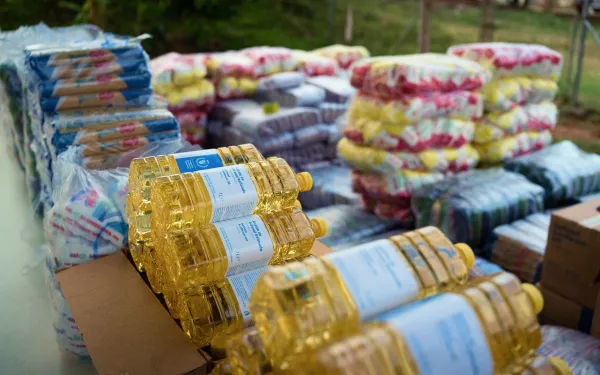

What’s inside a typical WFP food basket
Rice or flour
A staple item in many countries and vital source of daily energy.
Vegetable oil
Rich in essential fats and vitamins, supporting a healthy immune system.
Lentils or beans
Plant-based protein and fibre, helping maintain a healthy heart and gut.
Salt
Supports a healthy pregnancy and helps child development.
The food basket is based on local food preferences and diets wherever possible so the items could vary.
As conflict continues, five million people remain hungry, mostly along the frontlines. Millions of families are forced to sacrifice meals so their children can eat, or they are going into debt to buy food.
Overview
Shared meals will provide food, cash, school meals and help restore livelihoods for vulnerable Ukrainians.
Over two years into the war in Ukraine, the World Food Programme’s emergency operation is well under way. WFP is on the frontlines focusing on communities near areas of active conflict. Despite huge challenges, WFP has given food and cash equivalent to 2.4 billion meals to families affected since 2022 — and counting. Programmes aim to source food locally, with 79% of the food WFP provides to Ukrainians being bought in Ukraine. Food boxes contain wheat flour, pasta, canned meat, canned beans, sunflower oil and oats. WFP has expanded its activities to include school feeding, pension top-ups and projects to help Ukrainians return to farming. WFP is working with the Ministry of Education to fund hot meals in primary schools. The initiative was piloted in 2023 helping 12,000 children. For 2024, the project has expanded to 11 oblasts (regions) supporting 60,000 school children in Ukraine.
Location
Ukraine